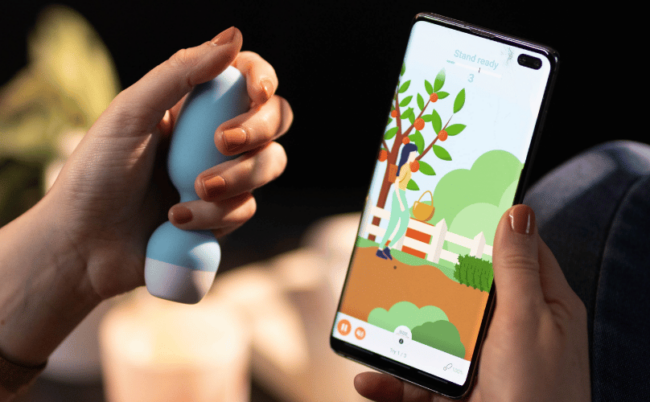Biofeedback and perineal rehabilitation: is Emy Trainer a better alternative?
Perineal rehabilitation is often based on two complementary approaches: passive or assisted methods, and guided active exercises. Among the tools offered, the biofeedback probe is sometimes used in medical practices. It measures pelvic floor muscle activity via sensors, and displays a visual (or audible) response to help the patient understand her contractions.
At the same time, the Emy connected perineal probe, which itself has biofeedback also offers real-time visualization, with a more fun, autonomous and personalized approach. Thanks to its mobile application, it guides you step by step rehabilitation and fits easily into everyday life.
So, should we choose a classic biofeedback probe, or the connected Emy Trainer solution? Here is a comparison to help you make the right choice.
Comparative table: biofeedback probe VS Emy perineal probe
| Criteria | Emy Trainer (connected probe) | Biofeedback probe |
|---|---|---|
| Clinical effectiveness | ✅ Clinically validated (prolapse I/II, postpartum) | ✅ Used in medical offices |
| Visible results | ✅ From 3 weeks in 80% of cases | 🔁 Variable, depending on frequency and posture |
| Real-time feedback | 📱 Yes, via fun and intuitive screen | 🖥️ Yes, via medical or sound screen |
| Progress tracking | 📈 Recorded in the app, progress curve | ❌ Often not kept between sessions |
| Motivation/commitment | 🎮 Games, reminders, motivating avatars | ⚠️ Less engaging, often austere |
| Integrated medical protocol | 🩺 Yes, developed with physiotherapists and midwives | ✅ Used by structural professionals |
| Recommended frequency | ✅ 3 to 5 times / week at home | 🧑⚕️ 1 to 2 times / week in the office |
| Time per session | ⏱️ 5 to 20 minutes | ⏱️ About 30 minutes |
| Setup time | ⚡ Very fast (less than 1 min) | 🕒 Longer (preparation, installation) |
| Comfort of use | 💆♀️ Medical silicone, gentle insertion | 🔄 Variable depending on model and sensor |
| Level of effort required | 💡 Low to moderate, depending on the game | 💡 Same (voluntary contraction) |
| Muscle fatigue | ✅ None | ✅ Rare |
| Learning curve | 📉 Very intuitive via mobile interface | 🔁 Requires explanation by a professional |
| Risk of error | 🔒 Low thanks to the support of the app | ⚠️ Risk if not properly accompanied |
| Passive multitasking | ✅ Yes, sitting or lying down | ❌ No, imposed posture + presence required |
| Customizing exercises | 🎯 Yes, depending on level, history, objectives | 🔁 Sometimes, depending on practitioner |
| Hygiene / maintenance | ✅ Easy cleaning (medical silicone) | ⚠️ More fragile or single-use material |
| Home use | ✅ Yes, 100% autonomous | ❌ Not recommended without supervision |
| Price | 💰 Medium, without subscription | 💸 Very high if at home, otherwise consultation |
| Warranty / trial | 🛡️ 100 days money back guarantee | ❌ Not applicable |
| Manufacturing/certification | 🇫🇷 Made in France / Portugal, CE | ✅ Medical certified, variable origin |
Should you choose a biofeedback probe or the Emy Trainer probe?
There biofeedback probe has its place in in-office rehabilitation: it allows an initial identification of contractions and work supervised by a professional. But it lacks flexibility at home, requires a more cumbersome installation and rarely offers personalized monitoring between sessions.
Conversely, Emy Trainer combines the best of both worlds: the precision of visual feedback, autonomy at home, personalization, and motivation through a modern interface. It allows women to regain control over their rehabilitation, without constraint, in complete privacy and using technology. biofeedback for the perineum.
For progressive, autonomous and motivating work on the perineum, Emy Trainer presents itself as a more complete and accessible solution than biofeedback alone.





